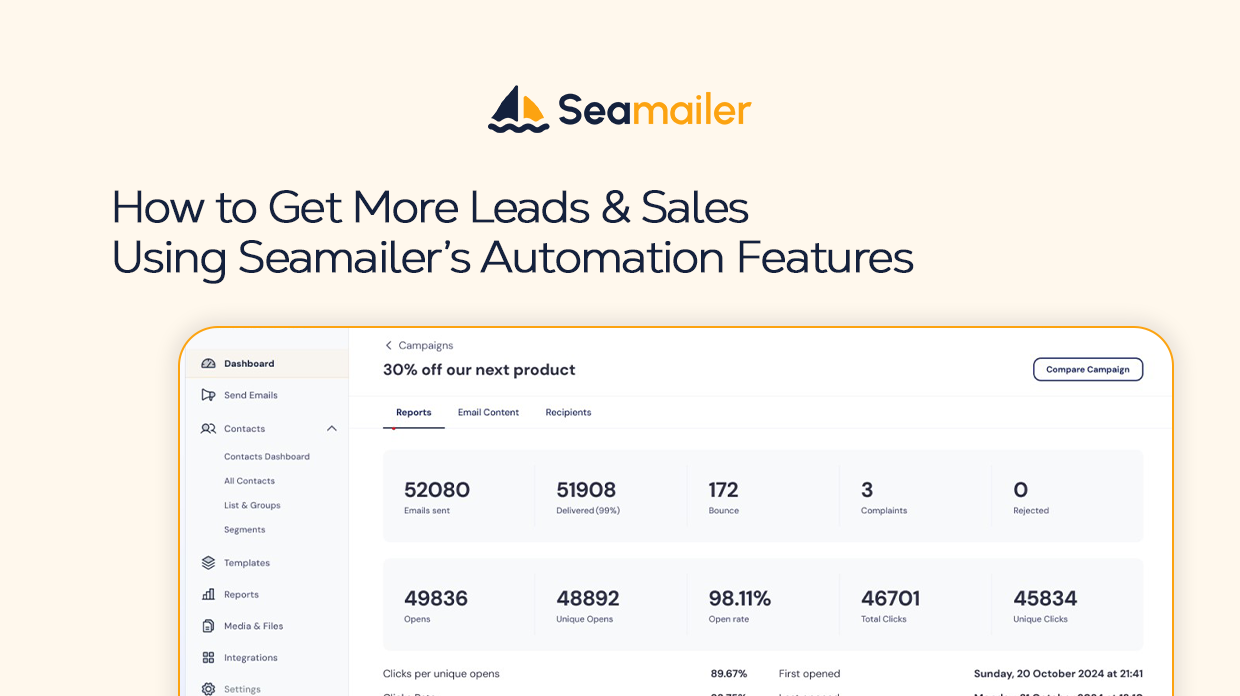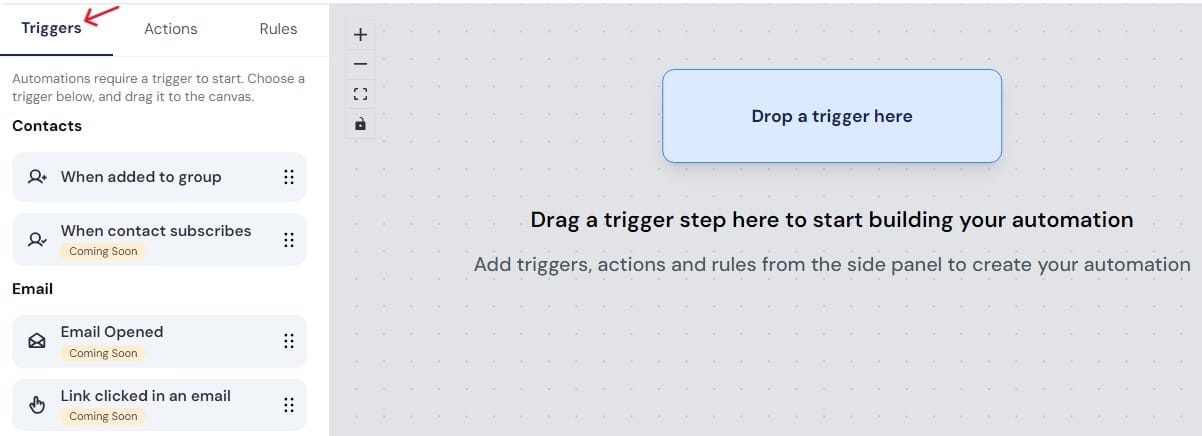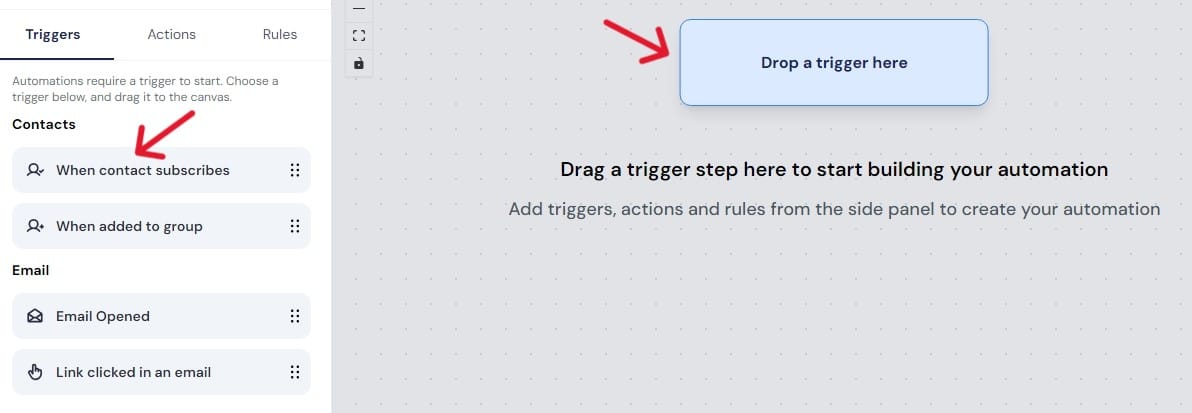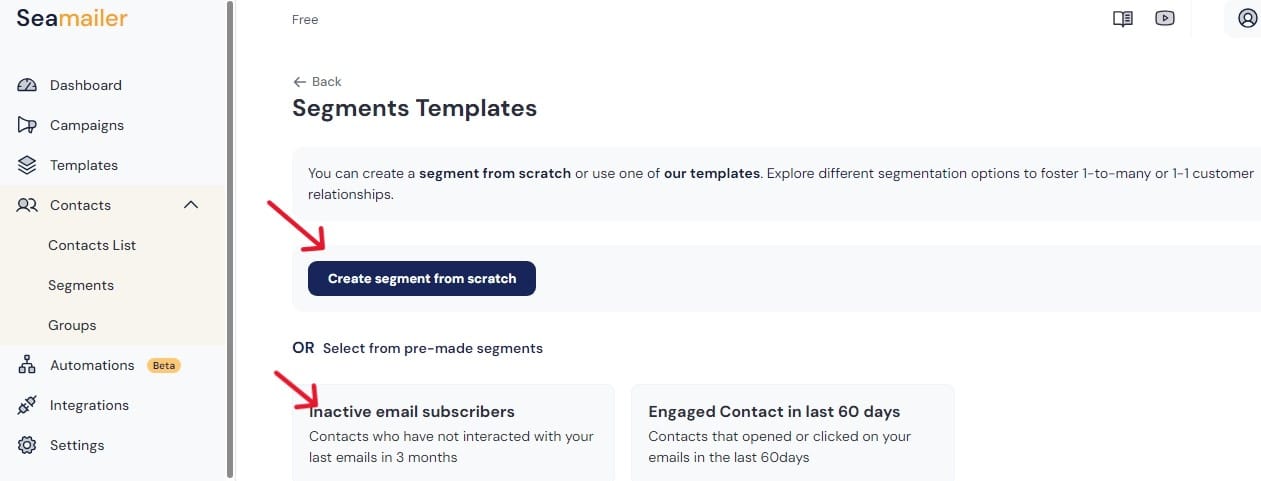How to Get More Leads & Sales Using Seamailer’s Automation Features

Are you leaving money on the table? Discover how to use Seamailer's powerful automation features to capture more leads, nurture them effectively, and convert them into paying customers, all on autopilot. This guide covers everything from lead magnets to post-purchase sequences.
From "Just Browsing" to "Just Bought": The Automated Way to Grow Your Business
You've worked hard to drive traffic to your website. Visitors are landing on your pages, browsing your products, or reading your blog posts. But then what? A significant portion of them will leave and never return. They're a lost opportunity, a potential sale that vanished into thin air. It’s the digital equivalent of someone walking into your physical store, looking around, and leaving without a single word.
This isn't just frustrating; it’s a massive drain on your time and resources. You can't manually follow up with every person who shows a flicker of interest. You can't personally send them a special offer a week after their visit. You can't remind them about the items they left in their cart.
But what if you could? What if there was a system that worked tirelessly for you, 24/7, to capture that interest, nurture those leads, and guide them seamlessly toward a purchase? This is the power of email automation, and it's the single most effective way to turn casual visitors into loyal customers.
This isn't about spamming people. It's about using smart, data-driven sequences to deliver the right message to the right person at the right time. With Seamailer’s automation features, you can build a lead-to-sale funnel that's not only incredibly effective but also requires minimal ongoing effort. Let's walk through how to set it all up.
Phase 1: Capturing Leads with a Purpose-Driven Lead Magnet
Before you can sell anything, you need to capture a lead. But simply asking for an email address isn't enough anymore. You need to offer something of value in return. This is your "lead magnet."
1. Define Your Lead Magnet: A lead magnet is a valuable piece of content that you offer for free in exchange for a visitor's email address. It should solve a specific problem for your target audience. Examples include:
- An e-commerce discount code (e.g., "10% off your first order").
- A PDF guide or checklist (e.g., "The Ultimate Checklist for Starting a Podcast").
- An exclusive video or mini-course.
- A free template or resource.
2. Create Your Opt-In Form: In Seamailer, setting up a form is easy. Navigate to the Forms section and design a clean, compelling pop-up or embedded form. Make sure the call to action is clear and enticing (e.g., "Get My Free Guide").
3. Set the Trigger: This is where the magic begins. Once a visitor fills out your form, this action becomes the trigger for your automation. In Seamailer, you'll simply select "When a contact subscribes to this list" or "When a contact submits this form" as your automation's starting point.

By capturing a lead with a relevant offer, you’re not just getting an email address—you’re getting a warm lead who has already expressed interest in your niche.
Phase 2: The Automated Nurturing Sequence
Now that you have a new lead, you can’t just let them sit on your list. You need to build a relationship, establish trust, and prove your value. A well-designed nurturing sequence does this for you automatically.
Workflow: The Welcome & Nurture Series
This is the most critical automation you can build. It's your first impression, your chance to turn a new subscriber into a loyal follower.
Email 1 (Immediate): The "Welcome & Deliver" Email
- Purpose: Welcome them to your community and immediately deliver the promised lead magnet.
- Content: Start with a warm welcome. Thank them for signing up. Provide a clear link or button to download the freebie. Briefly introduce your brand's mission and what they can expect from you (e.g., "Expect weekly tips on productivity and creativity").
Email 2 (2-3 days later): The "Value" Email
Purpose: Provide more value to build trust.
- Content: Don't sell anything yet. Share a popular blog post, a helpful tutorial video, or a customer success story. The goal is to establish yourself as an authority and show that you're here to help, not just sell.
Email 3 (3-4 days later): The "Problem/Solution" Email
- Purpose: Gently introduce your product or service as the solution to a problem your audience faces.
- Content: Start by identifying a common pain point. Then, subtly position your offering as the perfect solution. Include a clear call to action to check out your product page or book a demo. This is your first soft pitch.
Email 4 (2 days later): The "Social Proof" Email
- Purpose: Overcome skepticism and build credibility.
- Content: Share a glowing testimonial, a case study, or a few key stats about your product's success. People trust the opinions of others, and this email leverages that principle to build confidence.
How to build this in Seamailer:
- Trigger: Set the trigger as "When a contact subscribes to the 'Lead Magnet' form."
- Steps: Use the visual automation builder. Add a "Send Email" action for each email. Use the "Wait" step to set the appropriate delay between each email.
- Conditions: For a truly advanced flow, you can add a "Condition" step to check if the subscriber has already clicked on a product link. If they have, you can send them a different, more sales-focused email, while others continue on the nurturing path.
This nurturing sequence works entirely on autopilot, warming up every new lead who enters your funnel, turning them from a cold contact into a hot prospect.

Phase 3: The Sales Funnel Automation
Now, let's turn our attention to the leads who have shown a clear buying intent. These are the people who have engaged with your brand in a meaningful way.
Workflow: The Abandoned Cart Sequence (for e-commerce)
Did you know that the average abandoned cart rate is over 70%? That's a massive amount of lost revenue. A simple, well-timed automation can recover a significant portion of those sales.
- Trigger: A customer adds an item to their cart but does not complete the purchase. This requires integration between Seamailer and your e-commerce platform (like Shopify or WooCommerce).
- Email 1 (1 hour later): "Your cart is waiting!"
- Purpose: A gentle, immediate reminder.
- Content: A simple, direct email with a photo of the product(s) in their cart and a link back to the checkout page. Keep it light and friendly.
- Email 2 (24 hours later): "Still thinking about it?"
- Purpose: Overcome a common objection or offer a small incentive.
- Content: Remind them of the value of the product. You can also offer a small incentive, like free shipping or a 5% discount, to encourage them to complete the purchase.
- Email 3 (3 days later): "Your item is going fast!"
- Purpose: Create a sense of urgency.
- Content: Use scarcity to motivate the purchase. Mention that the item is selling out or that the offer will expire soon.
This automated sequence is a powerful tool for converting a hesitant shopper into a paying customer. It’s a series of non-intrusive nudges that have a huge impact on your bottom line.
Workflow: The Re-Engagement Campaign
Not every lead will convert immediately. Some will go cold after a few weeks or months. Don't write them off. A re-engagement campaign can bring them back to life.
- Trigger: A contact has not opened or clicked on any of your emails in the last 60 days. Seamailer’s segmentation features make it easy to create a list of these inactive subscribers.

- Email 1: "We miss you!"
- Purpose: A simple, non-salesy attempt to get their attention.
- Content: A friendly email asking them if they're still interested in your content. Remind them of the value you provide.
- Email 2 (7 days later): "Can we get a fresh start?"
- Purpose: Offer them a reason to re-engage.
- Content: Present them with a special offer or a free resource that you haven't sent before. Include a clear question: "If you're still interested in hearing from us, click here to stay on our list."
- Action: Use a condition to check if they clicked. If they did, a tag can be applied (e.g., "Re-engaged"). If they didn't, the automation can remove them from your list, keeping your list clean and improving your deliverability.
Conclusion: Making Automation Work for You
Building a lead and sales-focused automation funnel might seem like a lot of work at first, but remember: you only have to set it up once. After that, it works for you tirelessly in the background, generating leads, nurturing relationships, and driving sales.
With a platform like Seamailer, the tools you need are at your fingertips, and you don’t need any technical skills to use them. By creating smart, simple workflows, you can stop manually chasing every lead and start focusing on what you do best—growing your business. This isn’t just about working harder; it’s about working smarter.

